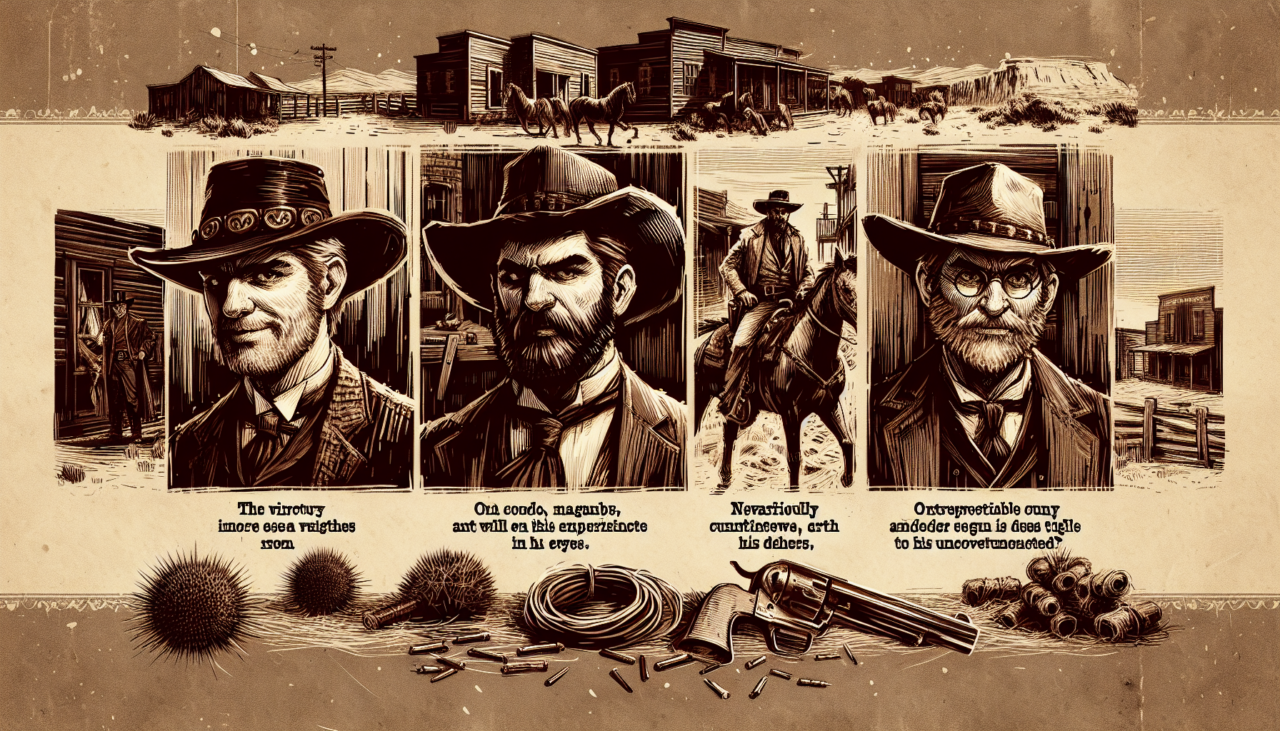Sergio Leone didn’t just dip his toes into the spaghetti western genre; he cannonballed in, creating a rough-and-tumble vision of the American West. Sure, A Fistful of Dollars kicked things off in ’64, but let’s be real, he didn’t hit peak Leone until 1966 with the masterpiece that is The Good, the Bad, and the Ugly. It is also an exemplary film of the Italian cinema.
Why It Still Resonates
Decades later, this movie isn’t just a classic; it’s a cultural touchstone. From Clint Eastwood’s iconic squint to Ennio Morricone’s unforgettable score, the magic that made it a hit back then still works today. Let’s break down why.
The Art of Introduction
Meet the Trio
The film wastes no time introducing our main players with a bang – or rather, several bangs. We see Tuco mowing down bounty hunters, Angel Eyes icing an ex-Confederate soldier (and his kid, yikes), and Blondie’s rescue attempt turning into a full-blown shootout. It’s a masterclass in character setup.
Establishing Good, Bad and Ugly
Blondie’s near-heroic (though profit-motivated) attempt immediately paints him as “the good.” Angel Eyes’ cold-bloodedness? Pure “bad.” And Tuco’s survival-at-all-costs triple kill? That’s your “ugly.” These opening scenes aren’t just action-packed; they cleverly establish the central themes and conflicts.
Morricone’s Musical Genius
Ennio Morricone didn’t just write a score; he crafted an opera for the Wild West. His music perfectly complements Leone’s grand vision, creating an auditory landscape as vast and unforgiving as the desert itself. It’s not just a soundtrack; it’s a character in itself. This is one of the many reasons why it’s a timeless western.
Even if you haven’t seen the movie, you know the theme. It’s *the* western score, instantly recognizable and forever burned into the collective consciousness of movie lovers. It is a signature of Italian cinema.
Lee Van Cleef: The Embodiment of Evil
Leone’s movies are full of memorable bad guys, but Angel Eyes is in a league of his own. He might not be as purely sadistic as Frank in Once Upon a Time in the West, but he’s a close second. It’s Van Cleef’s chilling performance that makes him so unforgettable.
- The Intense Gaze
- The Ominous Smirk
- The Random Acts of Violence
He is a revolting villain that viewers can’t help but watch.
Simple Story, Epic Scale
At its core, The Good, the Bad, and the Ugly is a simple tale. Three gunslingers are after the same pot of Confederate gold. That’s it. No convoluted plot twists or lengthy exposition dumps.
Focus on the Journey
The beauty lies in the journey. Leone lets the characters and action drive the story, making the three-hour runtime feel surprisingly brisk. It is not about the destination, it’s about the ride, baby!
Violence as Satire
Leone breathed new life into the Western genre with his exaggerated violence and dark humor. He shattered the romanticized myths of the Old West, replacing them with morally ambiguous characters navigating a brutal landscape. It’s less John Ford, more Quentin Tarantino with a Stetson.
Once Upon a Time in the West might be a love letter to classic westerns, but The Good, the Bad, and the Ugly is a full-blown satirical takedown. It’s a poke in the eye to the genre’s traditional tropes.
Eli Wallach: The Heart of the Film
While Blondie and Angel Eyes remain enigmatic figures, Tuco is the character we connect with. We see his flaws, his vulnerabilities, and his motivations. We get a glimpse into his past and his family.
The Bandit We Love to Hate (and Hate to Love)
Tuco isn’t good or evil; he’s just trying to survive. Wallach’s performance is so endearing that you can’t help but root for the “ugly” bandit, even when he’s at his worst.
The Civil War Spectacle
The Civil War battle scene is a highlight of the movie. Two armies stand between Blondie, Tuco and their gold. The film uses the American Civil War as a setting.
Blowing up a bridge to get to the gold is a brilliant satirical jab at the futility of war. Leone isn’t interested in glorifying conflict; he’s using it to highlight the characters’ greed and indifference.
Delli Colli’s Visual Masterpiece
Tonino Delli Colli’s cinematography is stunning, capturing the vastness and beauty of the desert with incredible widescreen shots. It rivals the work in classic westerns like Shane.
Leone’s signature style is on full display, contrasting sweeping landscapes with intense close-ups. He dwells on the wide shots, letting the audience soak in the beauty and desolation of the West.
The Perfect Finale
The final standoff is a masterpiece of tension and editing. It is a perfect example of Leone’s style, with its juxtaposition of wide shots and extreme close-ups. The sequence builds to a fever pitch, culminating in a lightning-fast draw.
A Masterclass in Directing
Right before the bullets fly, Leone zooms in on eyes and holsters. It’s a sequence so iconic, it’s considered one of the best directed in cinema history. No wonder that it is a timeless western.
Clint Eastwood: The Antihero Defined
The Man with No Name
Eastwood perfected his “Man with No Name” persona over three movies, culminating in this iconic performance. It’s the quintessential western antihero, imitated and parodied countless times.
A Cinematic Icon
Eastwood’s portrayal is more than just a performance; it’s a cultural touchstone. He stands alongside other legendary characters like Atticus Finch as one of the most memorable protagonists of the 1960s.
Conclusion
So there you have it. The Good, the Bad, and the Ugly isn’t just a great western; it’s a cinematic landmark. If you haven’t experienced it, what are you waiting for? Grab some popcorn, settle in, and prepare to be transported to a world of gunslingers, gold, and unforgettable music.
